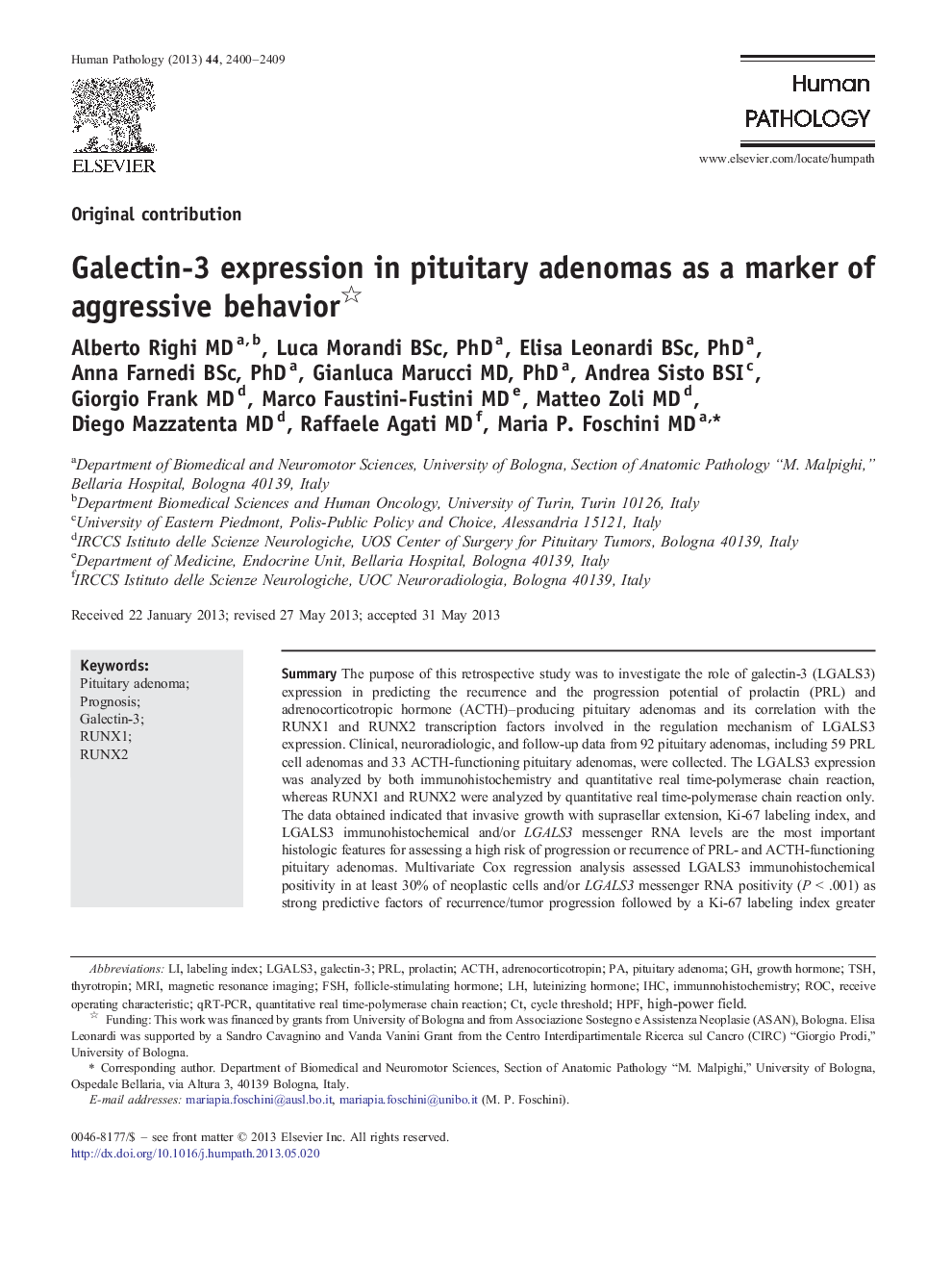| Article ID | Journal | Published Year | Pages | File Type |
|---|---|---|---|---|
| 6215625 | Human Pathology | 2013 | 10 Pages |
SummaryThe purpose of this retrospective study was to investigate the role of galectin-3 (LGALS3) expression in predicting the recurrence and the progression potential of prolactin (PRL) and adrenocorticotropic hormone (ACTH)-producing pituitary adenomas and its correlation with the RUNX1 and RUNX2 transcription factors involved in the regulation mechanism of LGALS3 expression. Clinical, neuroradiologic, and follow-up data from 92 pituitary adenomas, including 59 PRL cell adenomas and 33 ACTH-functioning pituitary adenomas, were collected. The LGALS3 expression was analyzed by both immunohistochemistry and quantitative real time-polymerase chain reaction, whereas RUNX1 and RUNX2 were analyzed by quantitative real time-polymerase chain reaction only. The data obtained indicated that invasive growth with suprasellar extension, Ki-67 labeling index, and LGALS3 immunohistochemical and/or LGALS3 messenger RNA levels are the most important histologic features for assessing a high risk of progression or recurrence of PRL- and ACTH-functioning pituitary adenomas. Multivariate Cox regression analysis assessed LGALS3 immunohistochemical positivity in at least 30% of neoplastic cells and/or LGALS3 messenger RNA positivity (P < .001) as strong predictive factors of recurrence/tumor progression followed by a Ki-67 labeling index greater than 3% (P = .019) in the 81 cases in which follow-up data were available. In addition, a significant correlation between LGALS3 and RUNX1 expression levels (P = .0435) was found. This retrospective immunohistochemical and molecular study demonstrated that LGALS3 expression appeared to be a predictive factor of the aggressive behavior of PRL- and ACTH-functioning pituitary adenomas, and its expression was correlated with RUNX1 expression levels.
